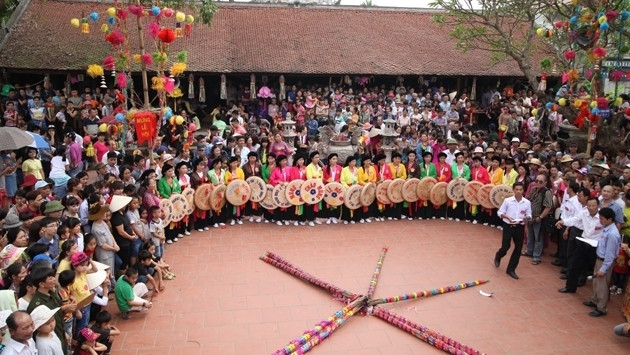Elders in the village said the craft has been handed down through generations in the village for hundreds of years. However, in the early 20th century, the techniques of making the conical hat faced the threat of falling into oblivion.
Hai Cat, a village artisan, went to the ancient imperial city of Hue to learn how to make Hue conical hats. At the Ha Dong fair in 1930, Hai Cat’s products were highly appreciated by visitors, earning him a certificate from the authorities.
After being recognised for his skill, he returned to his birthplace to provide vocational training to his fellow villagers and revive the hat-making industry.
Materials for making conical harts are gathered from many areas across the country: silk thread from Trieu Khuc village in Hanoi, bamboo to make a wooden frame for the hats from Hoa Binh and Thanh Hoa province, palm leaves from Quang Binh province.
The small village is crowded with people who not only come here to place orders but also witness the process of making conical hats.
Phuong Trung commune now has a population of roughly 17,000; over 2,000 of them earn their living by making conical hats with around 8,000 conical hats being produced per day.

Rubbing green palm leaves is the first stage of making conical hats

The leaves are then left to dry in the sunshine until they turn white.

Next, the leaves are assembled in a wooden frame

.. and sewn with rounds of needles, using silk thread

Artisan Nguyen Thu Huong and a conical hat designed herself
.jpg)
Teaching a girl how to make a conical hat

Chuong village’s conical hats are not only present at rural markets and supermarkets nationwide, but are also exported abroad.

Another popular product of Chuong village is “Non quai thao”(a kind of conical hat with a fringe hanging on both sides)

'Non quai thao' is often used by performers in ‘Quan ho’ (love duet singing) and folk music festivals.









![[In Pictures] President Luong Cuong receives Governor of Kaluga Province](https://en-cdn.nhandan.vn/images/5992a12dd6e78b9bfb434962ff18307331f51c4c3a3e5fcfcd42f0234766d9c450eca9ae12f5f315618dafdb06cbe64c344b9404599dcafdc84ae4ddd5452acc/251125-ctn-3.jpg.webp)






